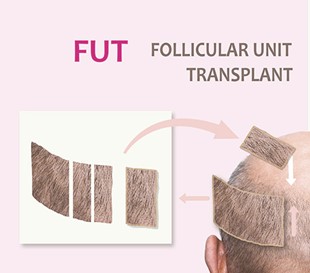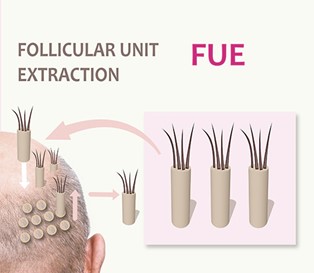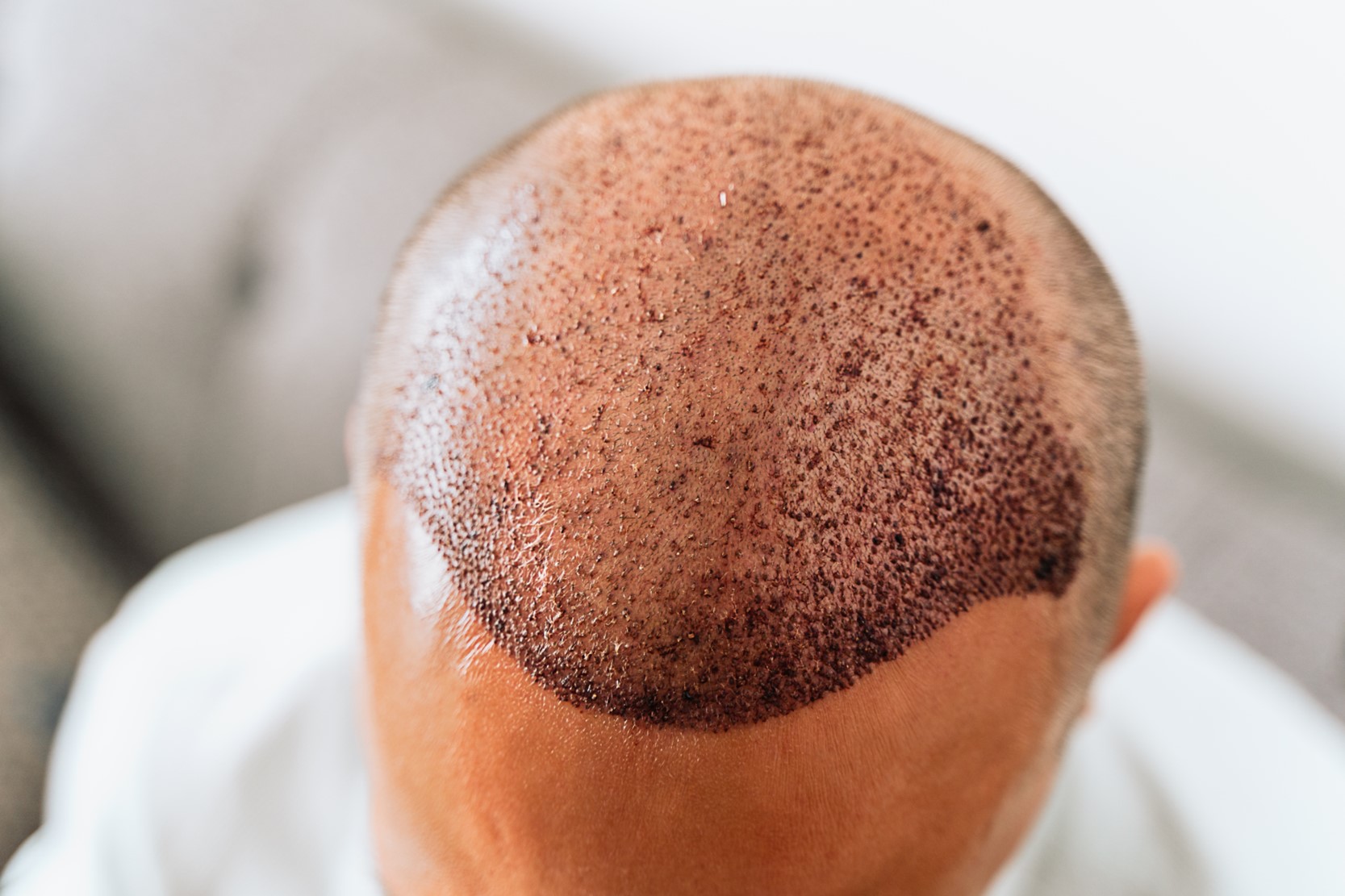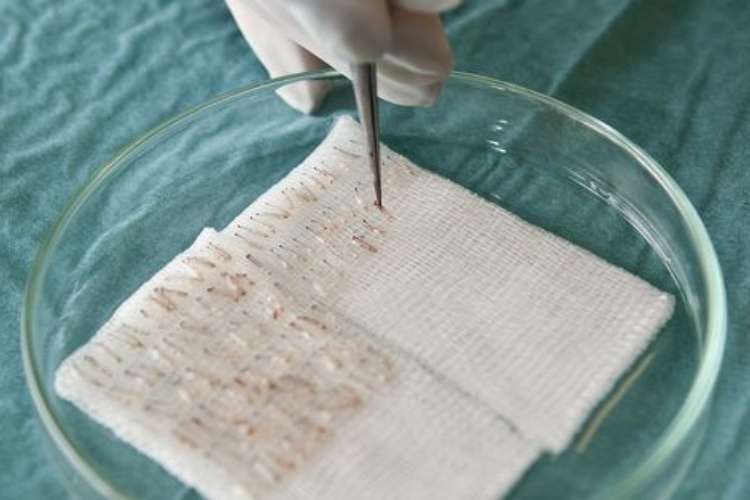What is a Hair Transplant?
Hair loss is a common concern that affects millions of individuals globally, resulting in a search for effective solutions to regain hair and confidence. What is a hair transplant? This is a question asked often. Among the various treatments available, hair transplant surgery stands out as one of the most popular and efficient methods. But what exactly is a hair transplant, and how does it work?
A hair transplant is a surgical procedure designed to move hair follicles from a part of the body called the “donor site” to a bald or thinning area known as the “recipient site.” This technique is primarily employed to treat male pattern baldness, but it can also be useful for women and those experiencing hair loss due to trauma, surgery, or medical conditions.
The transplanted follicles are genetically resistant to balding, so they should continue to produce new strands of hair for many years to come.
- Hair Certain Canada
- 8 minutes
Table of Contents
Common Causes of Hair Loss
Hair loss can occur due to various reasons, such as genetics, hormonal imbalances, poor diet, stress, and even certain medical conditions. Male and female pattern baldness, also known as androgenetic alopecia, is the most common cause. This condition is often hereditary, meaning it can run in families.
Emotional and Psychological Impact
Losing hair can be more than just a cosmetic concern. For many, it impacts their confidence and can lead to feelings of insecurity. Studies have shown that hair loss can affect self-esteem, especially in younger individuals who associate a full head of hair with vitality and attractiveness. If you are suffering from hair loss, having a full head of hair can make you feel better about yourself and can also improve the quality of your relationships.
Types of Hair Transplants
There are two primary types of hair transplant procedures: Follicular Unit Transplantation (FUT) and Follicular Unit Extraction (FUE).
Follicular Unit Transplantation (FUT) Hair Transplant
Follicular Unit Transplantation or FUT is an older, more traditional hair transplant method. Also referred to as strip harvesting, FUT involves removing a strip of scalp from the donor site, typically the back of the head. This strip is then dissected into individual follicular units. Once the entire strip is slivered and cut, the surgeon makes incisions on the scalp or the recipient area using needles or blades to which the grafts are inserted. Although effective, this method can leave a linear scar at the donor site but allows for the transplantation of a larger number of follicles.

Follicular Unit Extraction (FUE) Hair Transplant
FUE is a less invasive technique where individual hair follicles are removed directly from the donor area and transplanted to the recipient area. It doesn’t leave a noticeable scar, making it popular among those who prefer shorter haircuts.
In the FUE method, the individual follicular units are extracted one at a time from a donor area. This is performed using micro-punches which are 0.8mm in diameter, either manually or using a motorized device. The punch incises the skin surface around every hair follicle before they are carefully extracted with forceps. During the extraction, the removal of adjacent follicular units is avoided to prevent the appearance of a scar line. Each hair follicle is carefully implanted, one by one, using a specialised implanter tool taking into account the angle, direction and depth to provide a natural-looking result.
With FUE, there is no need for any incisions, hence no linear scarring across the back of the head. However, the entire head would have to be shaved until hair is sized down into a stubble for easier removal. The entire FUE procedure takes more time and skill to perform compared to FUT.

What is Direct Hair Implantation (DHI) Hair Transplant
DHI is a more advanced version of FUE where the follicles are implanted using a specialized tool that allows for direct insertion without the need to create recipient sites beforehand. Both FUE & DHI implant hair follicles that have been harvested with the FUE method. The question, therefore, should not be dhi vs fue, but rather sharp implanters vs incisions. DHI uses sharp implanters vs FUE using incisions, The use of sharp implanters with DHI is not a hair transplant method, but rather a placing technique.
Who is a Good Candidate for a Hair Transplant?
Not everyone experiencing hair loss is a suitable candidate for a hair transplant. Ideal candidates are typically those with stable hair loss patterns, sufficient donor hair, and good general health. It’s also crucial to have realistic expectations regarding the outcome.
The Hair Transplant Process
The hair transplant process involves several meticulous steps, each crucial to achieving the best results.
Consultation and Planning: The journey begins with a consultation with a hair transplant specialist. During this session, the specialist assesses the extent of hair loss, discusses the patient’s goals, and plans the surgery. This stage is critical for setting realistic expectations and ensuring the patient understands the procedure.
Harvesting Donor Hair: Depending on the chosen method (FUT or FUE), the surgeon will harvest hair follicles from the donor site. Once the plan is set, the surgeon will administer local anesthesia to the donor and recipient areas. In FUT, a strip of scalp is removed, while in FUE, individual follicles are extracted. Both methods aim to collect healthy, robust hair follicles for transplantation.
Preparing the Recipient Site: Once the donor hair is harvested, the surgeon prepares the recipient site by making small incisions where the new hair will be placed. The placement of these incisions is strategically planned to mimic the natural hair growth pattern, ensuring a seamless, natural look.
Implanting Follicles: The harvested hair follicles are then carefully implanted into the recipient site. This step requires precision and artistry to ensure the transplanted hair blends well with the existing hair and follows the natural direction of hair growth.
Procedure Length: The actual procedure can take several hours, depending on the number of grafts needed. Most patients experience minimal discomfort during the process, thanks to local anesthesia
Recovery and Growth: After the procedure, the transplanted hair follicles go through a healing process before new hair growth begins. It typically takes several months to see significant results, with full growth usually evident after a year.
Choosing the Right Hair Transplant Method
The best hair transplant method depends on several factors, including:
Extent of Hair Loss: FUT hair transplants can be more suitable for extensive hair loss due to its ability to harvest a larger number of grafts.
Scarring Concerns: If you are concerned about scarring, FUE hair transplantation might be a better choice due to its minimally invasive nature.
Donor Area Availability: If the donor area is limited, FUT might be preferable as it can harvest more grafts at once.
Cost of Hair Transplants in Canada
The cost of a hair transplant can vary widely based on factors such as the technique used, the number of grafts needed, the person doing the procedure and the location of the clinic. On average, it can range anywhere from $4,000 to $18,000. While it’s a significant investment, many consider it worthwhile for the long-term results. For a more detailed look at hair transplant costs in Canada, please review our guide titled “Hair Transplant Costs in Canada”.
Risks and Side Effects of Hair Transplants
Like any surgical procedure, hair transplants come with some risks, including infection, scarring, and temporary swelling. However, with an experienced surgeon, these risks are minimal, and most side effects subside within a few weeks.
Benefits and Considerations of Hair Transplants
Hair transplants offer numerous benefits. Unlike wigs or temporary solutions, transplanted hair grows naturally and can be treated just like your original hair. However, it’s important to have realistic expectations and understand that multiple sessions may be needed to achieve the desired density and fullness. To consider:
Long-term Results: One of the significant advantages of hair transplants is the permanence of the results. Once transplanted, the hair follicles are resistant to the hormone dihydrotestosterone (DHT), which is responsible for male pattern baldness. This resistance ensures that the transplanted hair will not fall out in the future.
Natural Appearance: A well-performed hair transplant offers a natural appearance that is virtually indistinguishable from the patient’s original hair. The precise placement of follicles ensures that the new hair grows in the same direction as the existing hair, creating a cohesive and authentic look.
Boost in Confidence: Beyond the physical benefits, hair transplants can significantly boost a person’s confidence and self-esteem. The psychological impact of hair loss can be profound, and restoring a full head of hair can help individuals feel more attractive and self-assured.
Post-Procedure Care of Hair Transplants
To ensure the best results, you’ll need to follow specific aftercare instructions. This includes avoiding strenuous activities, protecting your scalp from the sun, and using prescribed medications to prevent infections.
Alternative Hair Restoration Options
If you’re not ready for a surgical procedure, there are non-surgical options available, such as medications like Minoxidil and Finasteride, laser therapy, and PRP (Platelet-Rich Plasma) treatments. However, these solutions may not provide the same long-lasting results as a hair transplant.
Choosing a Hair Transplant Specialist
Selecting a qualified and experienced hair transplant specialist is crucial to achieving the best results. Patients should research potential surgeons, read reviews, and seek before-and-after photos of previous procedures. A qualified hair transplant specialist will provide a thorough consultation, explain the options and set realistic expectations. They will also assess your scalp health, hair loss pattern, and overall goals. They will recommend the most suitable method based on your individual needs and discuss the entire process, including potential risks and recovery expectations.
A consultation with a qualified hair transplant doctor is the best way to determine if you’re a good candidate for a hair transplant procedure.
Review our guide titled “How to choose the right Hair Transplant Clinic in Canada”
Summary
A hair transplant can be a transformative procedure for those struggling with hair loss. By understanding the process and working with a qualified specialist, individuals can restore their hair and regain their confidence. Whether through FUT or FUE, hair transplants offer a viable solution to achieve a fuller, healthier head of hair. With the right approach and realistic expectations, patients can enjoy the long-term benefits of hair transplantation surgery and can certainly be life-changing when performed by experienced and qualified surgeons on suitable candidates.







